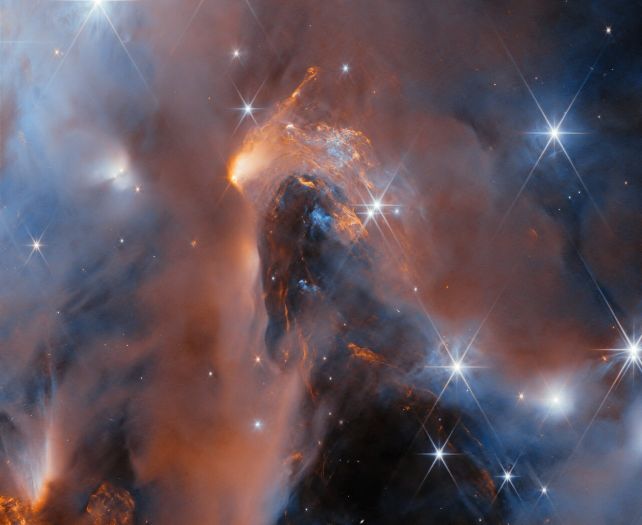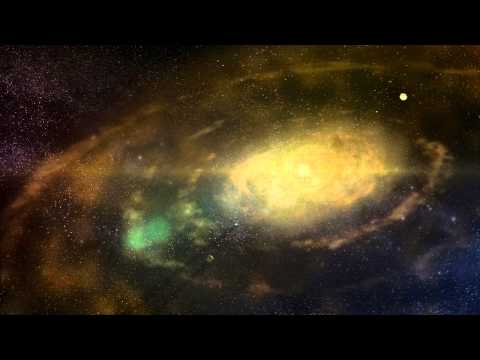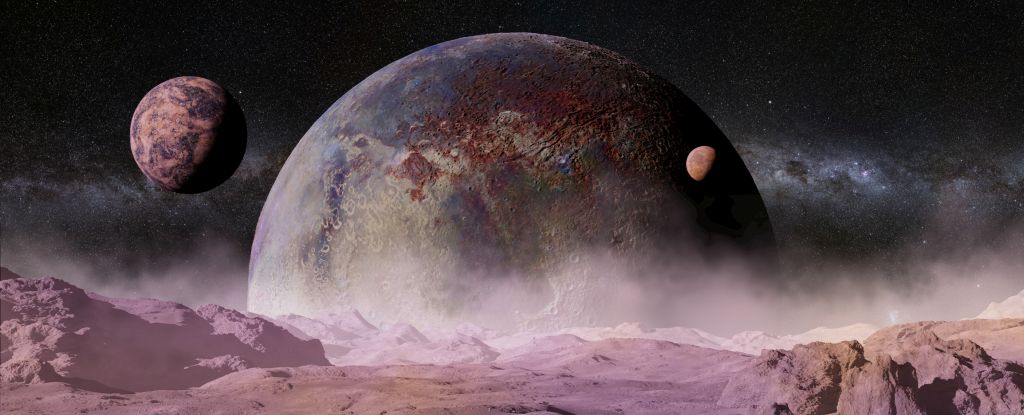Free-floating, planetary-mass objects that are just drifting carefree through the galaxy, untethered and starless, appear to be able to generate their own systems of moons, like a planetary system on a miniature scale.
An analysis of new JWST observations on a number of rogue planets – each weighing between five and 10 Jupiters – has revealed the presence of disks with a significant proportion of crystalline silicate, just like those surrounding some baby stars right before their planets start to form.
“These studies show that objects with masses comparable to those of giant planets have the potential to form their own miniature planetary systems,” says observational astronomer Aleks Scholz of the University of St Andrews in the UK.
“Those systems could be like the Solar System, just scaled down by a factor of 100 or more in mass and size. Whether or not such systems actually exist remains to be shown.”
Related: Billions of Undetected ‘Rogue Planets’ Could Be Tearing Wildly Through Our Galaxy
 Some FFPMOs have been discovered in the Perseus molecular star-forming cloud. (ESA/Webb, NASA & CSA, A. Scholz, K. Muzic, A. Langeveld, R. Jayawardhana)
Some FFPMOs have been discovered in the Perseus molecular star-forming cloud. (ESA/Webb, NASA & CSA, A. Scholz, K. Muzic, A. Langeveld, R. Jayawardhana)
In recent years, JWST has revealed a fascinating class of never-before-seen objects, just hanging out in crowded, nebular regions of space. They’re called free-floating planetary-mass objects, or FFPMOs, and they’re exactly what they sound like: objects with a mass up to 10 Jupiters hanging around all loosey-goosey.
The pockets of space they inhabit tend to be places where a lot of stars are being born. Such environments could be riddled with free-floating exoplanets, partially because so many stars in close proximity can gravitationally disrupt one another’s baby planetary systems. But it’s also possible that the FFPMOs just formed that way, much like stars do.
Previous observations revealed that FFPMOs can be surrounded by a disk of orbiting material, similar to what is seen around a baby star.
In the case of stars, this disk is left over from their formation. The spinning baby sun spools in material from the nebular cloud around it, which forms a disk via the conservation of angular momentum. The leftover material in this disk is what the star’s planets form out of.
The presence of disks around FFPMOs could mean they form the same way as stars do. But the next question is whether the disks behave the same way after the central object has formed, and that is what a team led by astrophysicist Belinda Damian of the University of St Andrews set out to investigate.
 frameborder=”0″ allow=”accelerometer; autoplay; clipboard-write; encrypted-media; gyroscope; picture-in-picture; web-share” referrerpolicy=”strict-origin-when-cross-origin” allowfullscreen>
frameborder=”0″ allow=”accelerometer; autoplay; clipboard-write; encrypted-media; gyroscope; picture-in-picture; web-share” referrerpolicy=”strict-origin-when-cross-origin” allowfullscreen>
They used JWST observations to study the composition of the disks of eight FFPMOs in the Orion nebula, and discovered evidence of hydrocarbon and silicate grains with signs of dust growth and crystallization, similar to what is sometimes seen in planet systems forming around a baby star.
The results suggest that one day, these strange objects could have extensive systems of moons, and even rings, similar to Jupiter or Saturn, or like a planetary system in miniature. Given that we’re yet to spot concrete evidence of a moon outside the Solar System, this is very cool indeed.
“These discoveries show that the building blocks for forming planets can be found even around objects that are barely larger than Jupiter and drifting alone in space,” Damian says.
“This means that the formation of planetary systems is not exclusive to stars but might also work around lonely starless worlds.”
The research has been published in Astronomy & Astrophysics.
